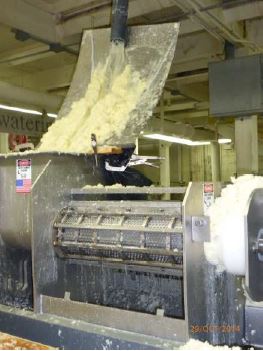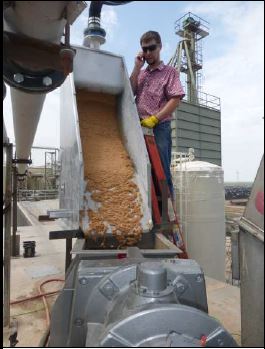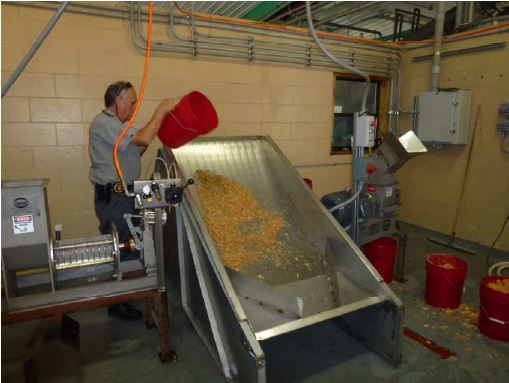JANUARY 12, 2015
An earlier Pressing News describes quick tests to determine if a material can be dewatered in a screw press. The simplest, the “fist” test, is to squeeze a fist full of the material and see if liquid can be separated. Next would be the “sock” test: put a clump of material in a cotton cloth, twist it into a ball, and see if water comes through. (Note: there are exceptions to the fist and sock tests. We recently had excellent success with an artichoke fiber that failed the fist test but worked great in a screw press.)
Encouraging results from the fist and sock tests frequently lead to running a sample of material in a Model CP-4 Laboratory Press. Vincent receives 5-gallon pails of samples on a weekly basis for this purpose. When we run a dewatering test in a screw press, we are quick to check the throughput capacity. Once stable operation of the press is achieved, no more changes are made. Then the press liquor and press cake are collected for a few minutes. It is important to stop this timed test before the press runs empty. Weighing the cake and liquor samples allows the throughput capacity to be calculated. With that data the size of the screw press required for a full scale operation can be determined. All of that can usually be done with a single pail of material. Vincent does not charge for these tests.
Many materials require pre-thickening before a screw press can get a bite on them and squeeze out the water. If a Vincent engineer brings a CP-4 or KP-6 press with him for some on-site testing, he is apt to have a pillow case with him. To pre-thicken a sample, the pillow case is put in a 5-gallon pail. Then sample material is poured into the pillow case. Next the pillow case is pulled out of the pail and allowed to drain until it is judged that the sample has sufficiently pre-thickened. That sample is then run through the screw press.
Other times we will bring a sidehill (static) screen along with the screw press. A couple pails of sample material are poured onto the surface of the screen, and the solids remaining are run through the screw press.
Improvising even more, the surface panel from a sidehill screen can be slung over the inlet to the screw press.
The photos below are from field testing.
Having the lab press on site allows the customer to run multiple tests with a variety of materials, under a variety of conditions. For this reason Vincent maintains ready availability of the equipment required. There are over sixty 4″ and 6″ presses in the rental fleet, along with sidehill screens, shredders, Fiber Filters and other ancillary machines.


FOOD INGREDIENTS CORN ETHANOL STILLAGE

CITRUS PECTIN
ISSUE #270
